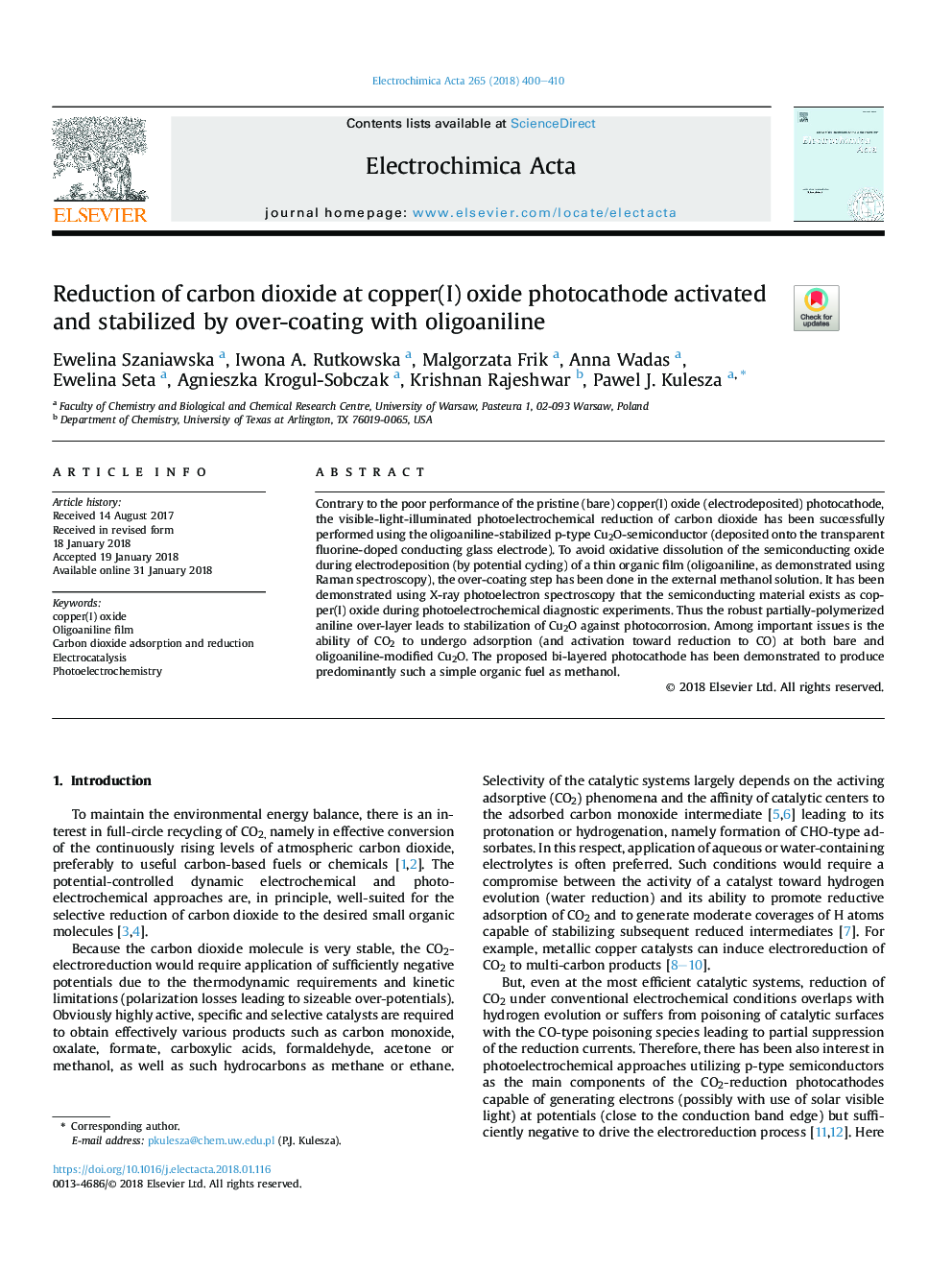| Article ID | Journal | Published Year | Pages | File Type |
|---|---|---|---|---|
| 6604159 | Electrochimica Acta | 2018 | 11 Pages |
Abstract
Contrary to the poor performance of the pristine (bare) copper(I) oxide (electrodeposited) photocathode, the visible-light-illuminated photoelectrochemical reduction of carbon dioxide has been successfully performed using the oligoaniline-stabilized p-type Cu2O-semiconductor (deposited onto the transparent fluorine-doped conducting glass electrode). To avoid oxidative dissolution of the semiconducting oxide during electrodeposition (by potential cycling) of a thin organic film (oligoaniline, as demonstrated using Raman spectroscopy), the over-coating step has been done in the external methanol solution. It has been demonstrated using X-ray photoelectron spectroscopy that the semiconducting material exists as copper(I) oxide during photoelectrochemical diagnostic experiments. Thus the robust partially-polymerized aniline over-layer leads to stabilization of Cu2O against photocorrosion. Among important issues is the ability of CO2 to undergo adsorption (and activation toward reduction to CO) at both bare and oligoaniline-modified Cu2O. The proposed bi-layered photocathode has been demonstrated to produce predominantly such a simple organic fuel as methanol.
Related Topics
Physical Sciences and Engineering
Chemical Engineering
Chemical Engineering (General)
Authors
Ewelina Szaniawska, Iwona A. Rutkowska, Malgorzata Frik, Anna Wadas, Ewelina Seta, Agnieszka Krogul-Sobczak, Krishnan Rajeshwar, Pawel J. Kulesza,
